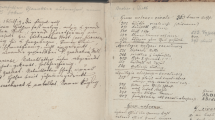Abstract
HALDANE'S rule states that "When in the F1 offspring of two different animal races one sex is absent, rare, or sterile, that sex is the heterozygous [heterogametic or XY] sex"1. This rule represents one of the few patterns characterizing animal speciation2,3. Traditional explanations of Haldane's rule1,4–6 claim that heterogametic hybrids are unfit because they lack an X chromosome that is 'compatible' with the autosomes of one species. Recent work2,7 shows that this explanation is incorrect for hybrid sterility: contrary to prediction, homogametic hybrids carrying both X chromosomes from the same species remain fertile. Until now, similar tests have not been performed for hybrid inviability. Here I show that homogametic hybrids who carry both X chromosomes from the same species are inviable. These results show that the genetic causes of Haldane's rule differ for hybrid sterility versus inviability. Haldane's rule does not, therefore, have a single genetic basis.
This is a preview of subscription content, access via your institution
Access options
Subscribe to this journal
Receive 51 print issues and online access
$199.00 per year
only $3.90 per issue
Buy this article
- Purchase on Springer Link
- Instant access to full article PDF
Prices may be subject to local taxes which are calculated during checkout
Similar content being viewed by others
References
Haldane, J. B. S. J. Genet. 12, 101–109 (1922).
Coyne, J. A. & Orr, H. A. in Speciation and its Consequences (eds Otte, D. & Endler, J.) 180–207 (Sinauer Associates, Sunderland, Massachusetts, 1989).
Coyne, J. Nature 355, 511–515 (1992).
Dobzhansky, T. Genetics and the Origin of Species (Columbia Univ. Press, New York, 1937).
Muller, H. J. in The New Systematics (eds Huxley, J. S.) 185–268 (Clarendon, Oxford, 1940).
Muller, H. J. Biol. Symp. 6, 71–125 (1942).
Coyne, J. A. Nature 314, 736–738 (1985).
Lee, W. H. & Watanabe, T. K. Jap. J. Genet. 63, 225–239 (1987).
Sturtevant, A. H. Genetics 5, 488–500 (1920).
Sturtevant, A. H. Carnegie Inst. Washington Publ. 399, 1–62 (1929).
Hutter, P., Roote, J. & Ashburner, M. Genetics 124, 909–920 (1990).
Biddle, R. L. Genetics 17, 153–174 (1932).
Wu, C.-I. Evolution 46, 1584–1587 (1992).
Ashburner, M. Drosophila: A Laboratory Handbook 1–1331 (Cold Spring Harbor Laboratory Press, New York, 1989).
Orr, H. A. Genet. Res. 59, 73–80 (1992).
Author information
Authors and Affiliations
Rights and permissions
About this article
Cite this article
Orr, H. Haldane's rule has multiple genetic causes. Nature 361, 532–533 (1993). https://doi.org/10.1038/361532a0
Received:
Accepted:
Issue Date:
DOI: https://doi.org/10.1038/361532a0
This article is cited by
-
100 Years of Haldane’s Rule
Resonance (2023)
-
Rapid Divergence of Key Spermatogenesis Genes in nasuta-Subgroup of Drosophila
Journal of Molecular Evolution (2022)
-
A rare exception to Haldane’s rule: Are X chromosomes key to hybrid incompatibilities?
Heredity (2017)
-
Cytological basis of sterility in male and female hybrids between sibling species of grey voles Microtus arvalis and M. levis
Scientific Reports (2016)
-
Higher levels of sex chromosome heteromorphism are associated with markedly stronger reproductive isolation
Nature Communications (2014)
Comments
By submitting a comment you agree to abide by our Terms and Community Guidelines. If you find something abusive or that does not comply with our terms or guidelines please flag it as inappropriate.



